Christchurch - Four Years After
![]()
On February 22, 2011, 12:51 PM local time, the CBD (Central Business District) of Christchurch was hit with a 6.3 magnitude earthquake. Many buildings, especially many historic icons in the CBD, were damaged, many people were injured and lives were lost. We were there to experience this cataclysmic event; fortunately, we were uninjured and in a safe place.
Now we had returned, four years later. We arrived a week before the fourth anniversary of the earthquake to learn about the recovery and to talk with people whose lives were so changed during those few seconds when disaster struck this stately city. We returned to Old Country House, the welcoming hostel where we had stayed four years ago.
Our exploration of the city began with a walk into the CBD to Cathedral Square where the Canterbury Cathedral stands, now enclosed by fences. The graceful steeple was missing along with a large section of the roof and walls of the nave. Across the square, the elegant former Post Office Building was also enclosed by fences, evidently under reconstruction.
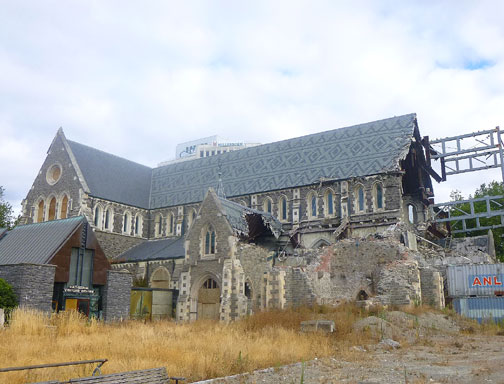
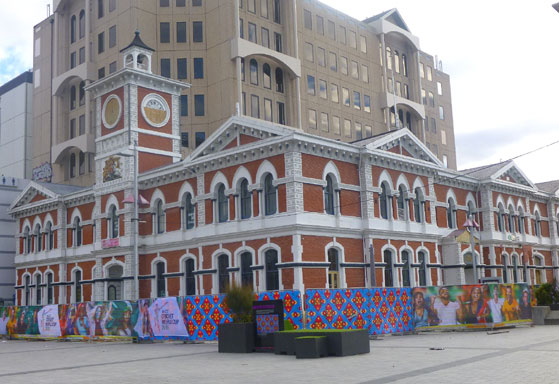
As we looked around, we realized that many of the surrounding buildings were gone and others, that from a distance looked intact, were fenced and closed. With this first view of the city in our minds we retreated back to our cozy hostel, where all was normal, to consider what we had seen.
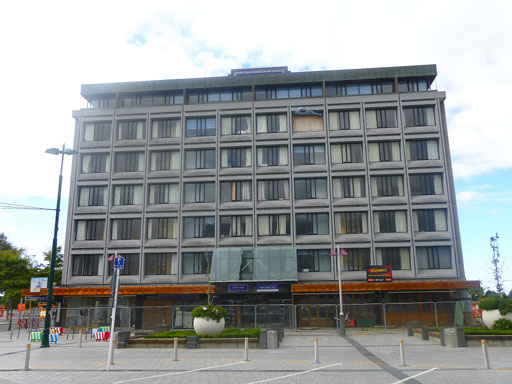
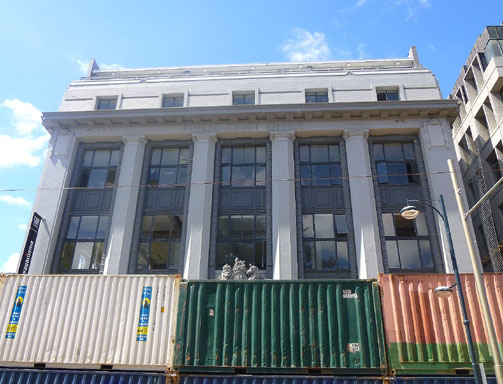
Next morning, after a good night's sleep, we set out on what would be a multi-day quest to learn as much as we could about the plans of this great city to recreate itself into the Christchurch of the future. We imagined the tremendous challenge of affirming the city's historic heritage by restoring the beloved structures damaged by the earthquake while taking this opportunity to reinvent their city to meet the needs of the future.
First, we walked around the neighborhood of the Old Country House, pleased to find that many of the Quake-demolished shops (left picture) were either restored and operating or torn down (right picture)
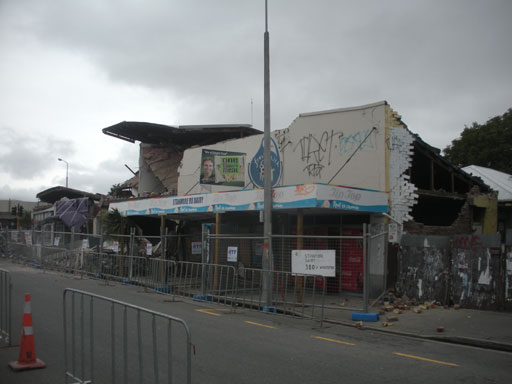
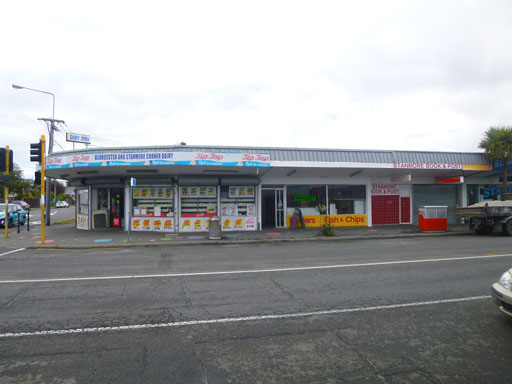
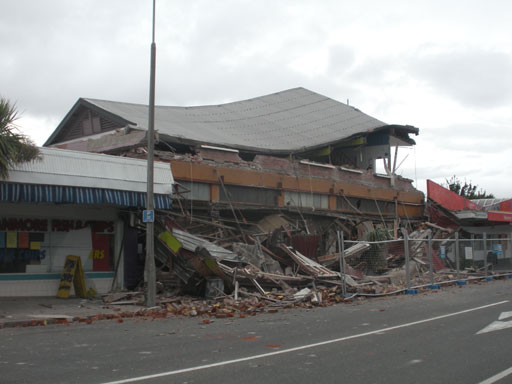
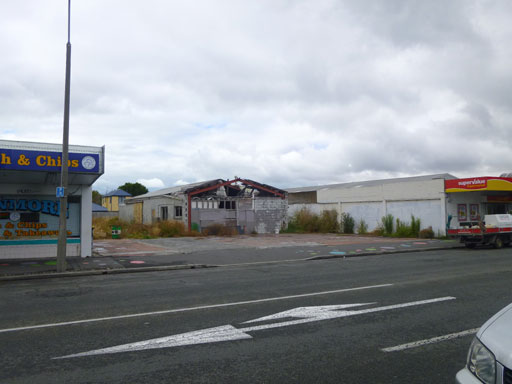
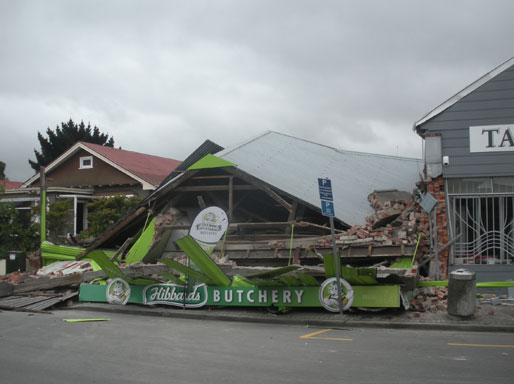
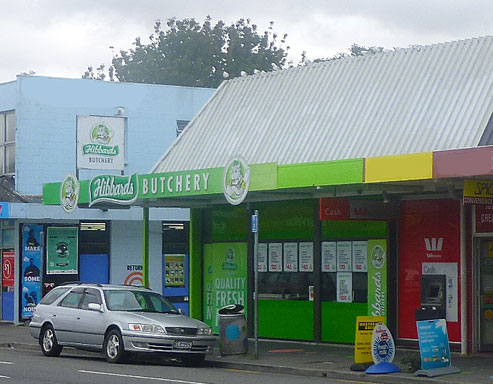
We were also pleased to see that the Super Value market was doing well. It had been badly damaged and closed in the quake, but had reopened about a month later.
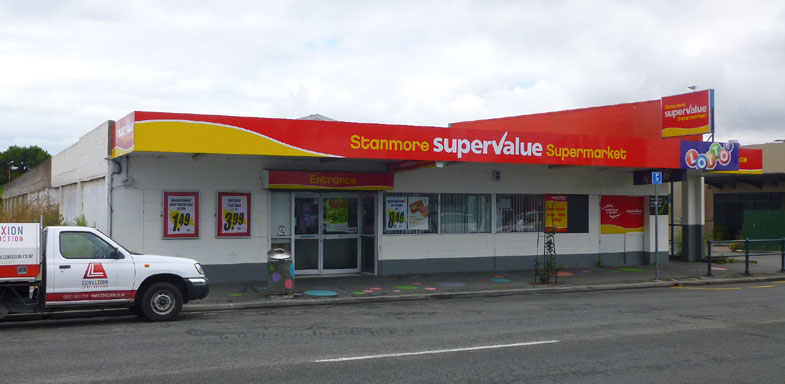
We rode the bus into the CBD to visit Re:START, the cluster of shops and cafes created from brightly colored shipping containers. This 'popup' retail complex offered a powerful success story of measures to bring people back to the city center! We observed locals and visitors alike gathering for lunch or coffee or a bit of shopping.
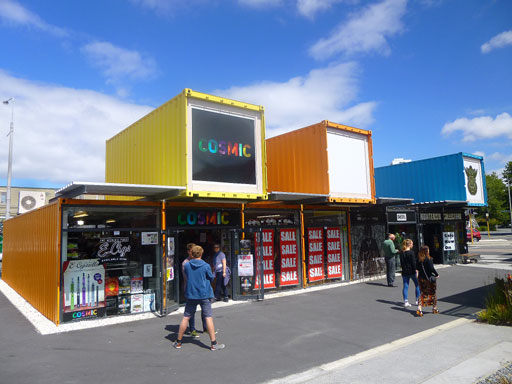
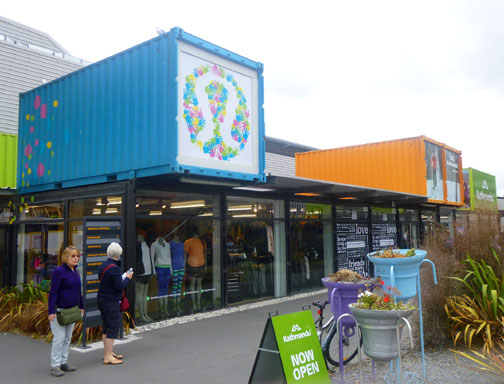
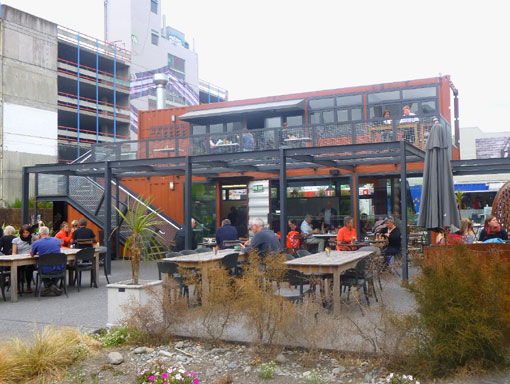
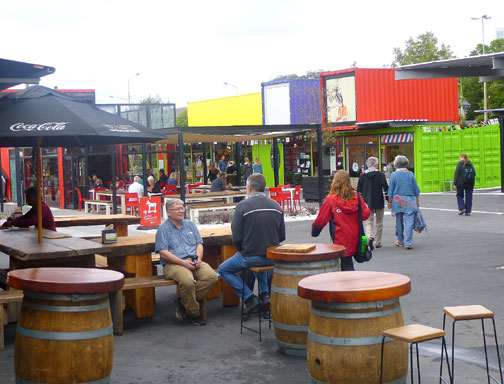
From a stop at the Future Christchurch Kiosk we learned about the city's recovery and planning process and the rebuilding that is well underway to restore life to the heart of the city. Many millions of dollars of federal and local government investments will be made to construct new government administrative centers, a multimodal transport center and to reconstruct the infrastructure. In addition, large private sector investments are planned as well, We viewed the steel frames of The Terrace, which will become commercial, office and residential space, along with the new Bus Interchange .
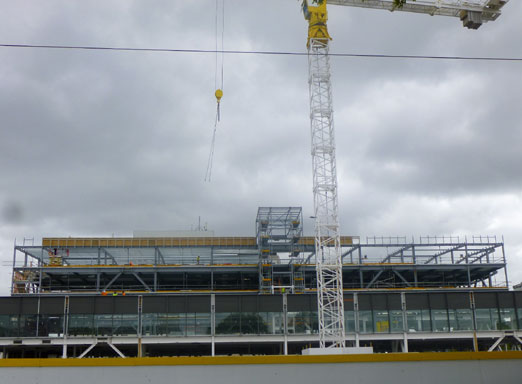
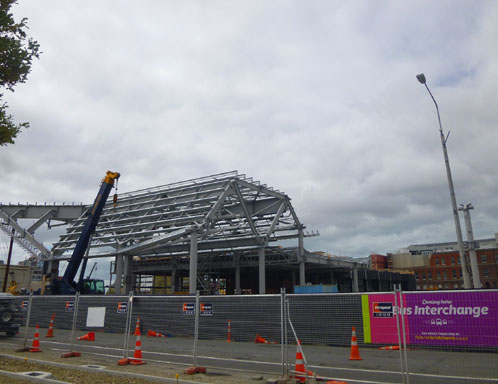
There is plenty of additional information on these and other projects. Click here (opens in a new window)
The pastel facades of the shops along New Regents Street were freshly painted and the shops alive and well.
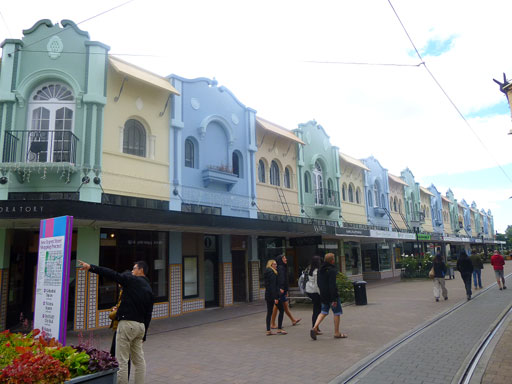
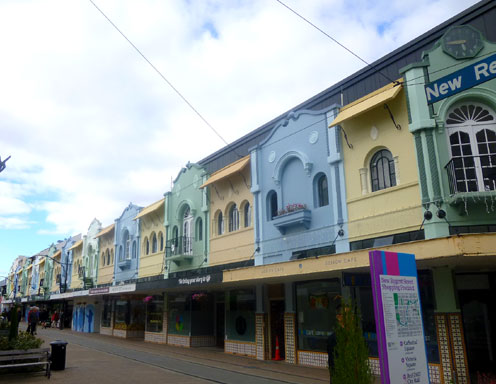
We were also pleased to see that the historic streetcars were trundling people around city, on routes much enlarged since our 2011 visit.
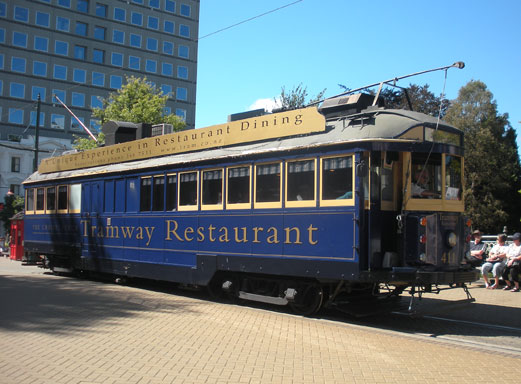
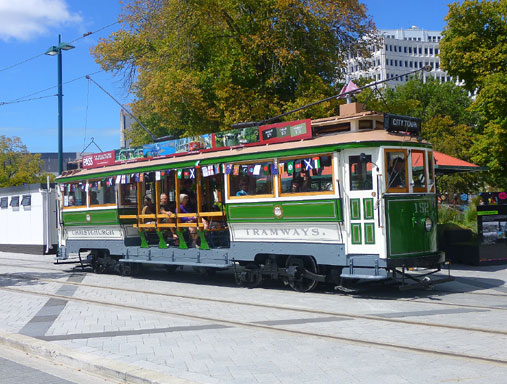
High Street, once a vibrant area of historic buildings housing cafes and restaurants (below) was largely destroyed in the earthquake. It is now planned to be reborn as the core of the new 'Retail Precinct' .
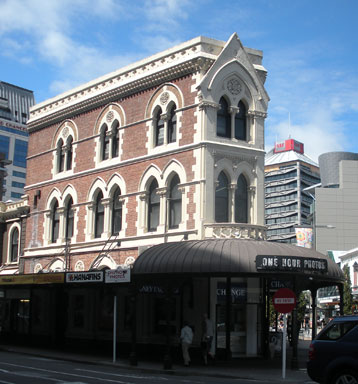
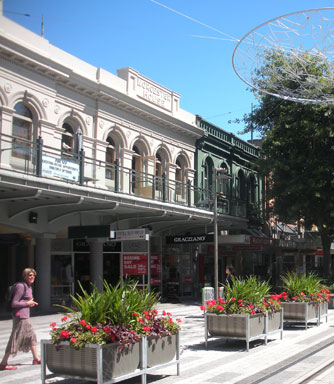
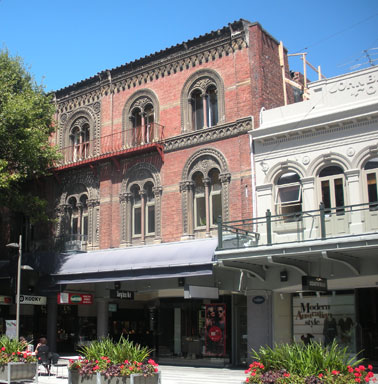
What about urban residential development, we asked. The goal is to increase the number of inner city residents to about 20,000 people in the new CBD. As a start, a Residential Frame or sector has been designated on the east side of the centre where around 750 medium density homes in a mix of four to six story townhouses and apartments will be built. This will be the first stage of urban development to bring more people into the city to live, work, learn and play. Planners envision a diverse community living in the city's heart - empty nesters, young families, creative professionals, key workers and everyone else who wants to be a part of a thriving central city.
The Cathedral is the poster child for the tremendous quandry - to restore or remove! Posters throughout the city ponder the question and advocacy groups on both sides of the question have arisen to make their cases to the public and in the courts. The fate of this stately and beloved building still hangs in the balance, but based on the posters and the people we talked to, the prevailing view is restoration, and the sooner the better.
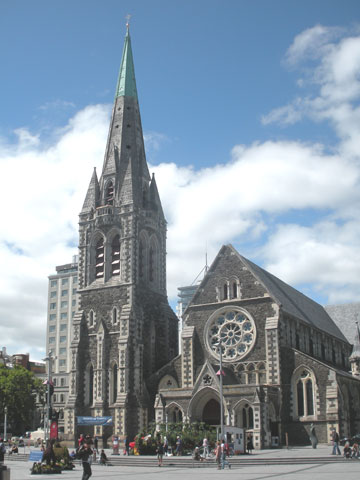
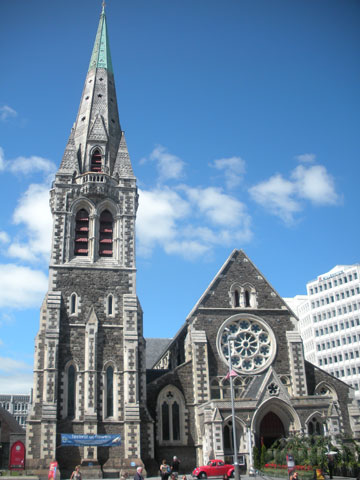
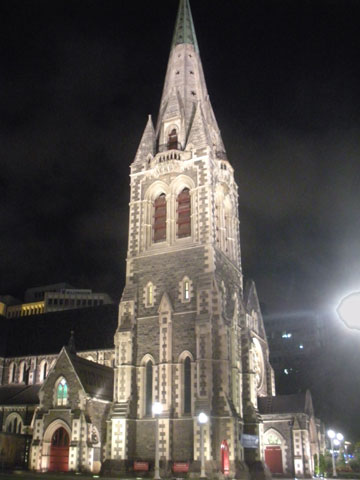
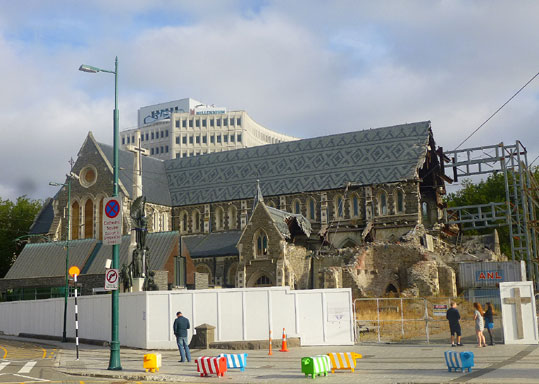
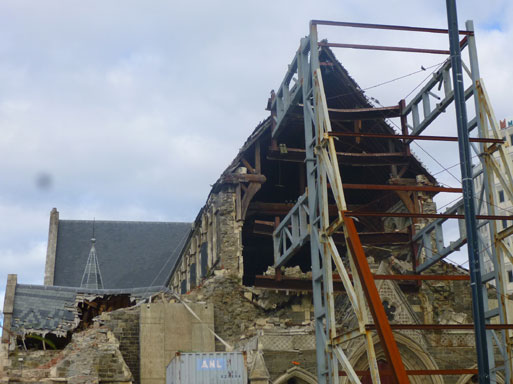
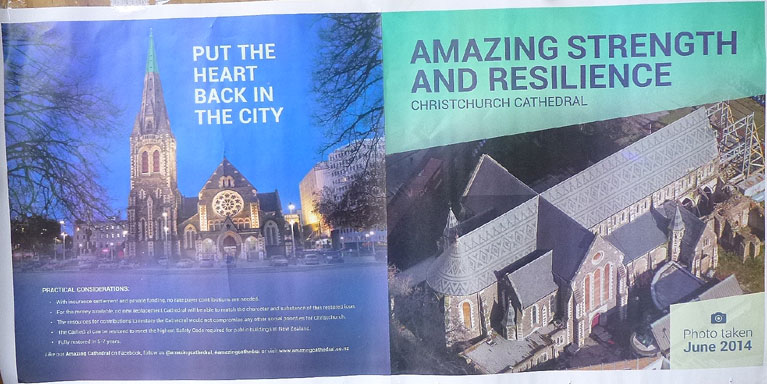
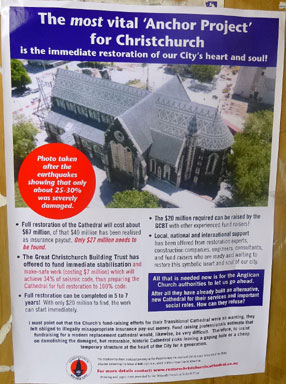
In our view, restoration is unquestionably the proper choice. The Cathedral is the emotional heart of the city and maybe of the country and once it's restored, New Zealand will better be able to move past the trajedy of the earthquake and into the future.
Walking along the street towards Hagley Park, we passed the Arts Centre. This complex of neo-gothic grey stone buildings, was originally the home of the University of Canterbury and the Girls and Boys High Schools, and more recently the heart of Christchurch culture (top row). It had not fared well and was imprisoned behind a network of supporting girders and scaffolding with a swarm of workers laboring on its stabilization and reconstruction (bottom row).
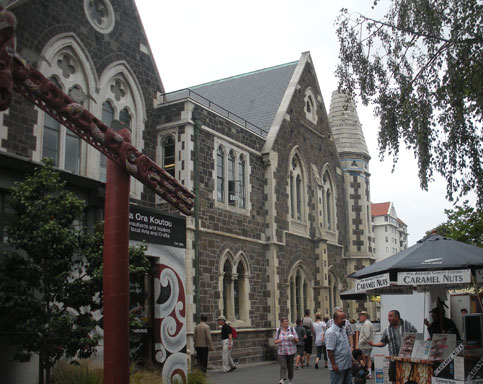
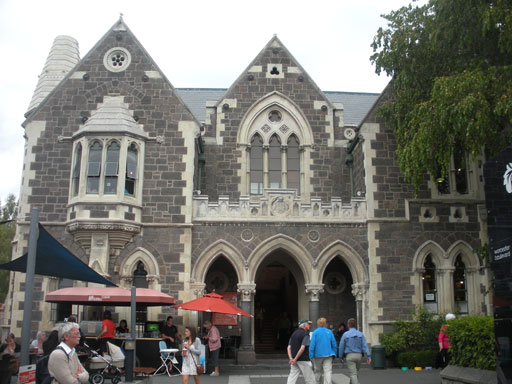
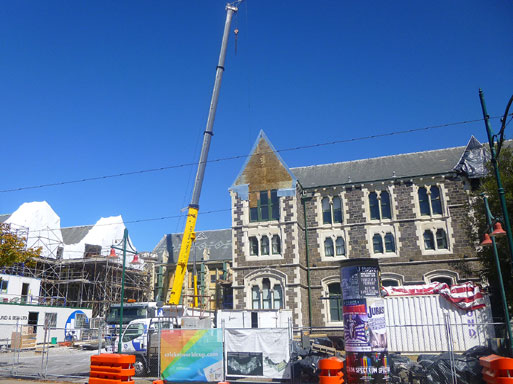
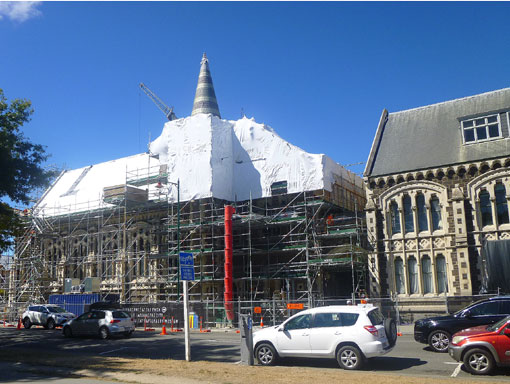
Further along the street, the modern Art Gallery with its curving, soaring glass facade and dangling aerial sculptures was fenced all around. We learned it had reopened soon after the earthquake, but was later closed while seismic stabilization was retrofitted into its foundations. (before at left, current at right)
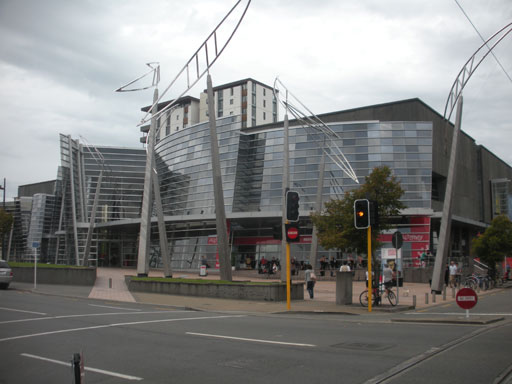
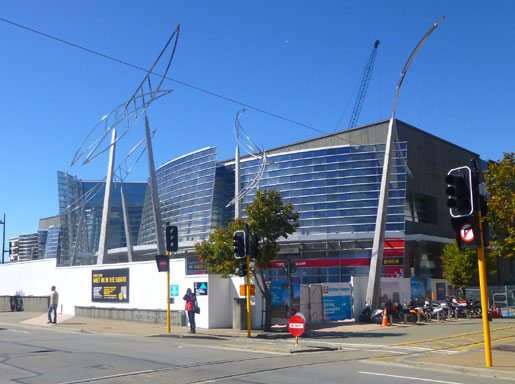
The stately buildings around the quadrangle of Christ's College, a boys school, looked amazingly intact but we learned that the significant damage done had been nearly all restored and that not a boy was injured during the quake.
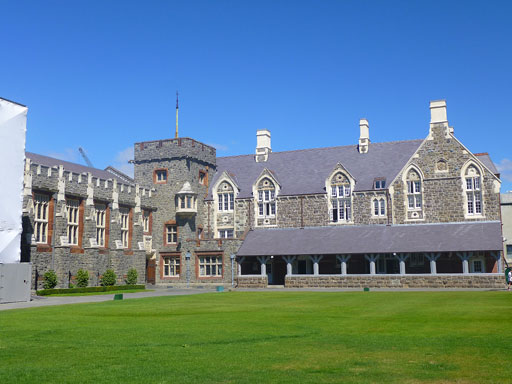
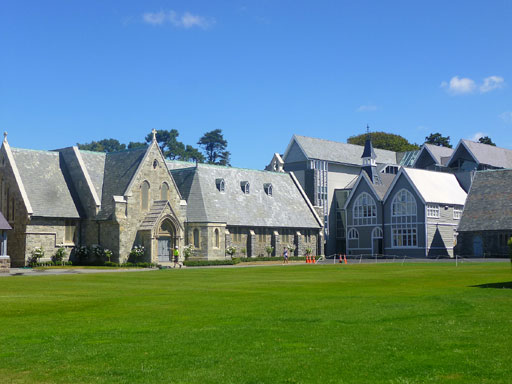
Hagley Park with the Botanic Gardens survived largely undisturbed and continues to offer its natural world connections to everyone.
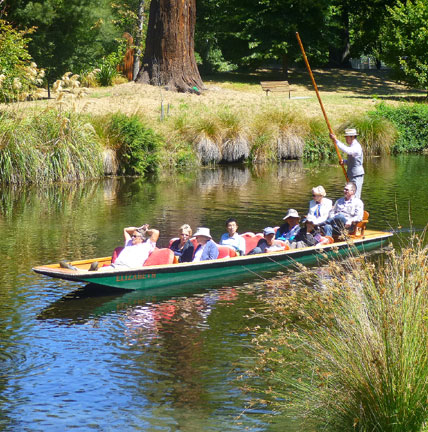
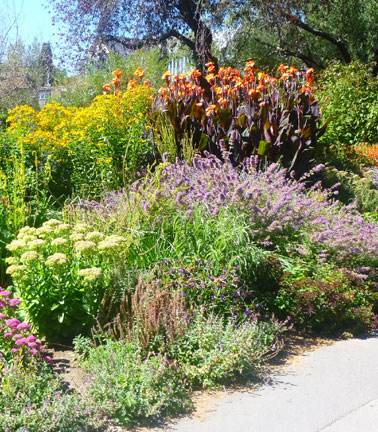
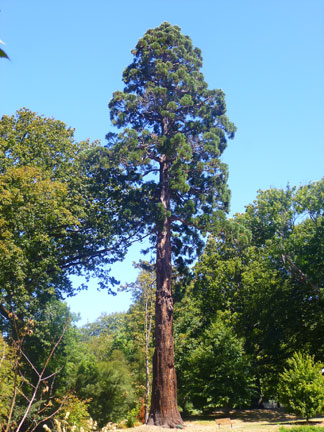
The Cricket Oval within the Park was quickly rebuilt in time to host upcoming matches and was a venue for of the Cricket World Cup 2015. Nearby Victoria Square became the FanZone where folks without tickets could gather to sit on the lawns and watch the matches on a large outdoor screen.
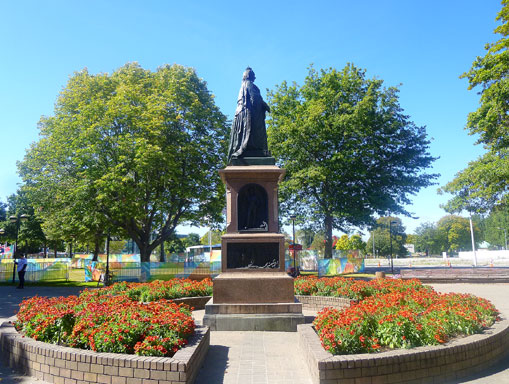
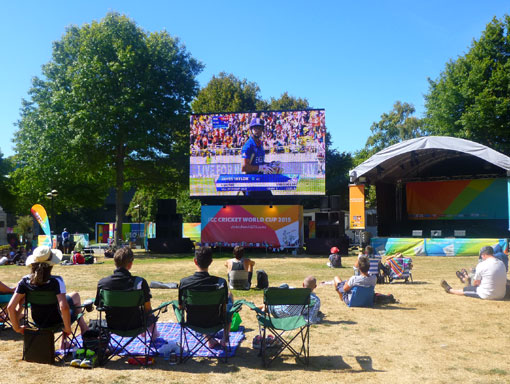
Well loved landmarks, such as the Victoria Clock Tower and the Bridge of Remembrance are being restored.
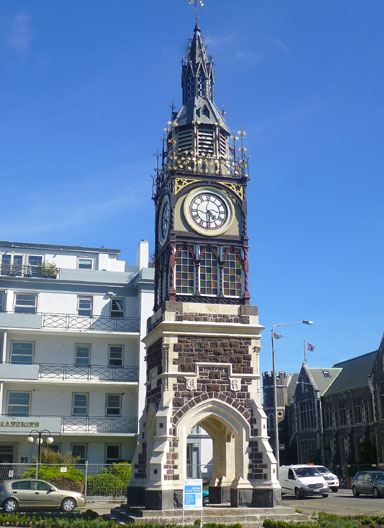
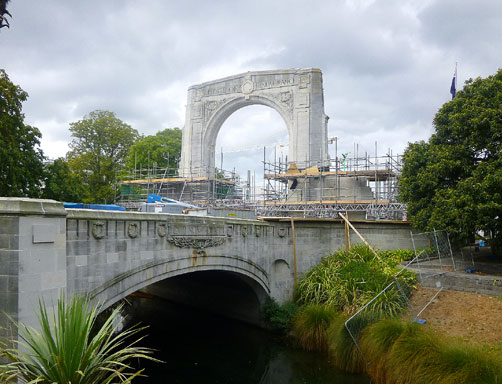
Red Zone or Green Zone?
About four months after the February 22, 2011 earthquake, CERA (Canterbury Earthquake Recovery Authority) announced the results of the assessment of zones of land damage. Properties that were badly damaged or in areas considered dangerous in future earthquakes were deemed to be in the 'Red Zone' and therefore unlikely to be suitable for continued residential occupation for a prolonged period of time. The owners received offers for the purchase of their property by the CERA. Most have accepted the offer and moved away.
Riverside neighborhoods in the Red Zone
One of the strange impacts of the seismic shock was the phenomenon of liquifaction as the sandy soil in areas adjacent to the River Avon was turned to gray semi-liquid mud that oozed up and covered the lawns and gardens, but also caused foundations of the homes to float, resulting in structural damage. The CERA authorities determined that the homes in these areas were unsafe and uninhabitable and declared to be in the Red Zone. Today, after four years, dozens of homes have been vacated and removed, leaving behind rare traces of the former comfortable neighborhoods. We rode through these zones on crumbling pavement, marveling that only lawns and hedges, rose bushes and fruit trees remained. Where did these suddenly displaced families go, we wondered?
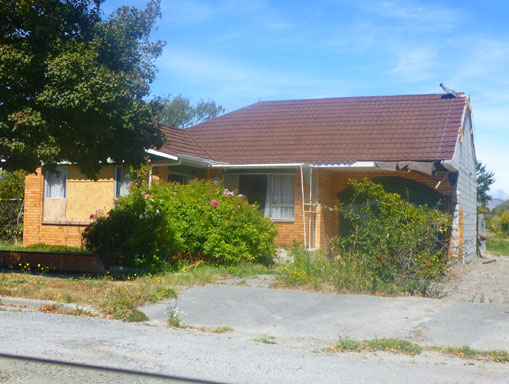
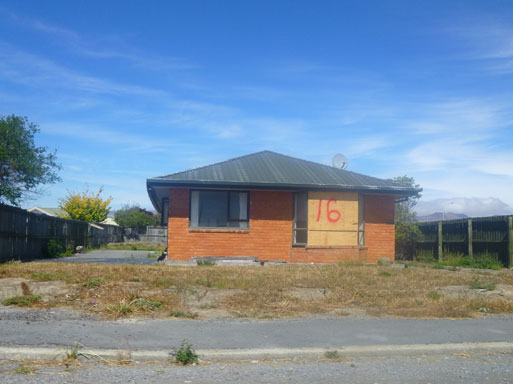
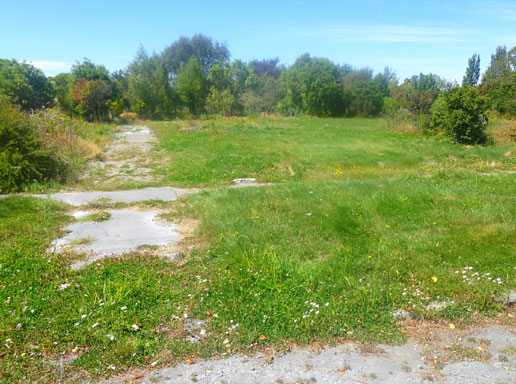
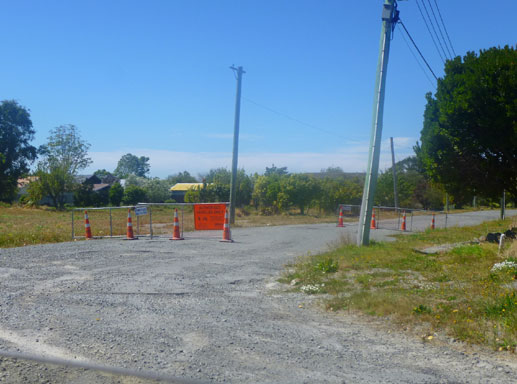
The Port Hills in the Red Zone
We visited our good friends, Bob and Pat, whose lovely home still sat perched high on a hill above the estuary in suburban Christchurch. Bob and Pat's home had suffered damage but was not in the Red Zone and they have continued to live there safely, but they showed us the cracks and other indications that all was not well. They took us on a tour of their area along a road protected from falling rocks by piled up containers. Many homes were gone. Some had fallen when the clifs on which they perched had collapsed, others were destroyed by falling rubble, while others homes had been declared Red Zone due to the instability of the cliffs on which they perched and had been removed. Again, we wondered where the families have gone.

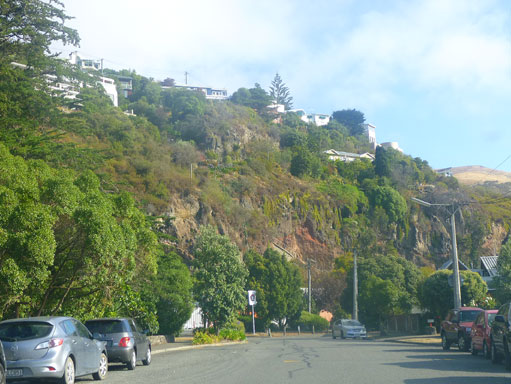
Enlarge the Port of Lyttelton?
The town of Lyttelton, just beyond the Port Hills, south of the city, suffered severe damage. We learned from a local man that right after the quake, all the pubs were damaged beyond repair; "It was just terrible!" he told us. But soon a few pubs opened so at least this portion of normal life resumed. Now the centre has thriving cafes, shops, and a new library and Community Hall.
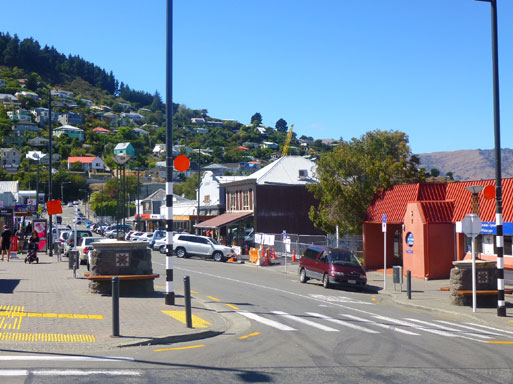
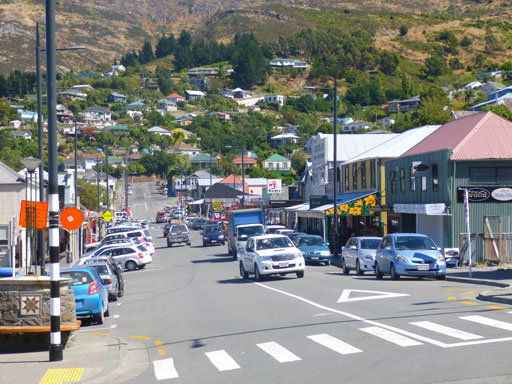
Now resident's main concerns revolve around the port enlargement plans. The port suffered damage, too, but was closed only briefly. We observed the container ships delivering goods, a tank farm for petrol and other petroleum products, and extensive stacks of logs to be shipped to Asian destinations.
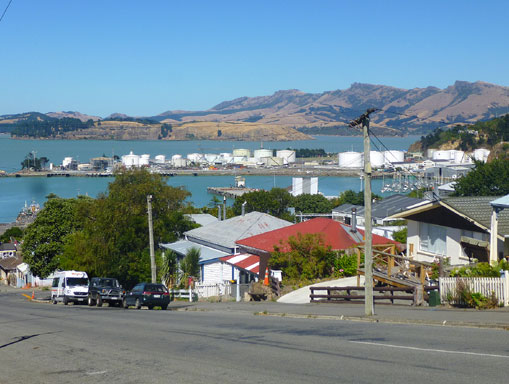
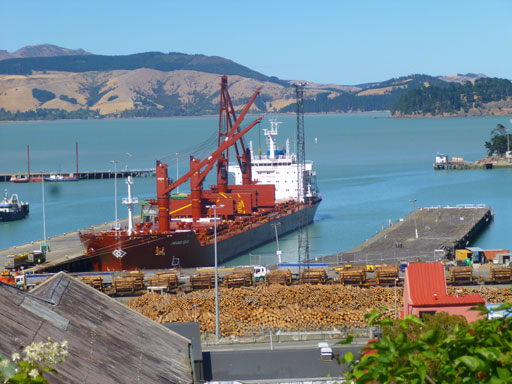
We learned that the port authority had made plans to greatly expand the port facilities using the city's earthquake debris to reclaim more land. This would enable the cruise ships to return, and the port to flourish. But locals wondered if their already much changed town would suffer more adverse impacts than benefits.
We were pleased to find the rail signal house standing undamaged (before and current pictures below). We were dismayed to find that the historic time ball tower had fallen due to the quake, but relieved to hear there were plans to rebuild a replica in a park on the site.
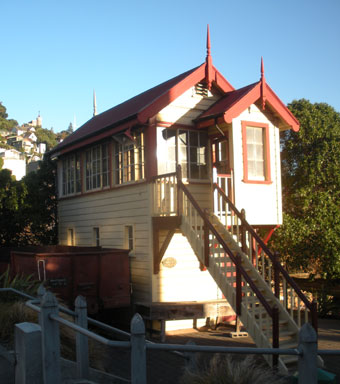
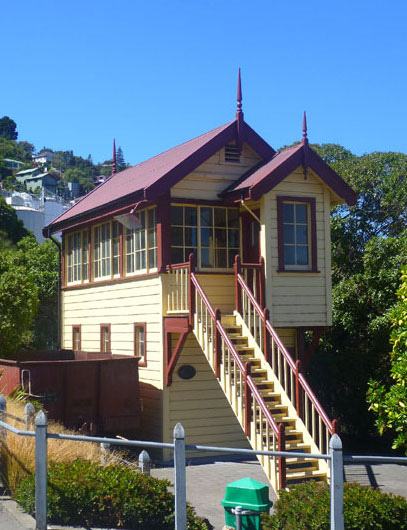
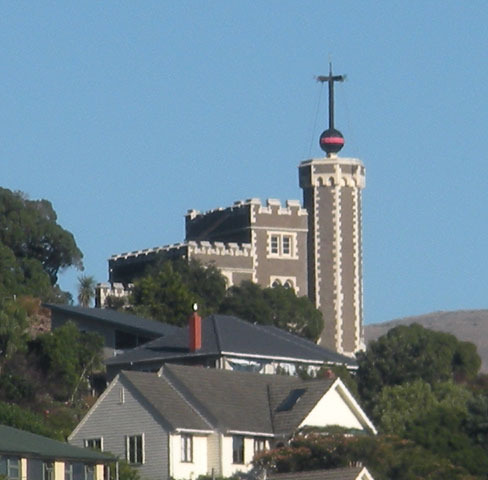
Final Thoughts
As we prepared to leave Christchurch, we pondered all that we had seen and learned during our visit. Four years after the earthquake, much has been accomplished, but much remains undone. Tough decisions still remain to be made. Visions, dreams and plans must be implemented. Construction in progress must be completed. Legal and financial issues must be resolved. We are confident that the future Christchurch will be a great city in due time. Meanwhile, we salute the courage, fortitude, determination, persistence, and patience of the Cantabrians and all the Kiwis who support them!
Click here to return to our ''Searching for Nomad Friendly Climate - Summer in the Winter" page
Click here to return to our 'Searching the World for People Friendly Cities' page
![]()